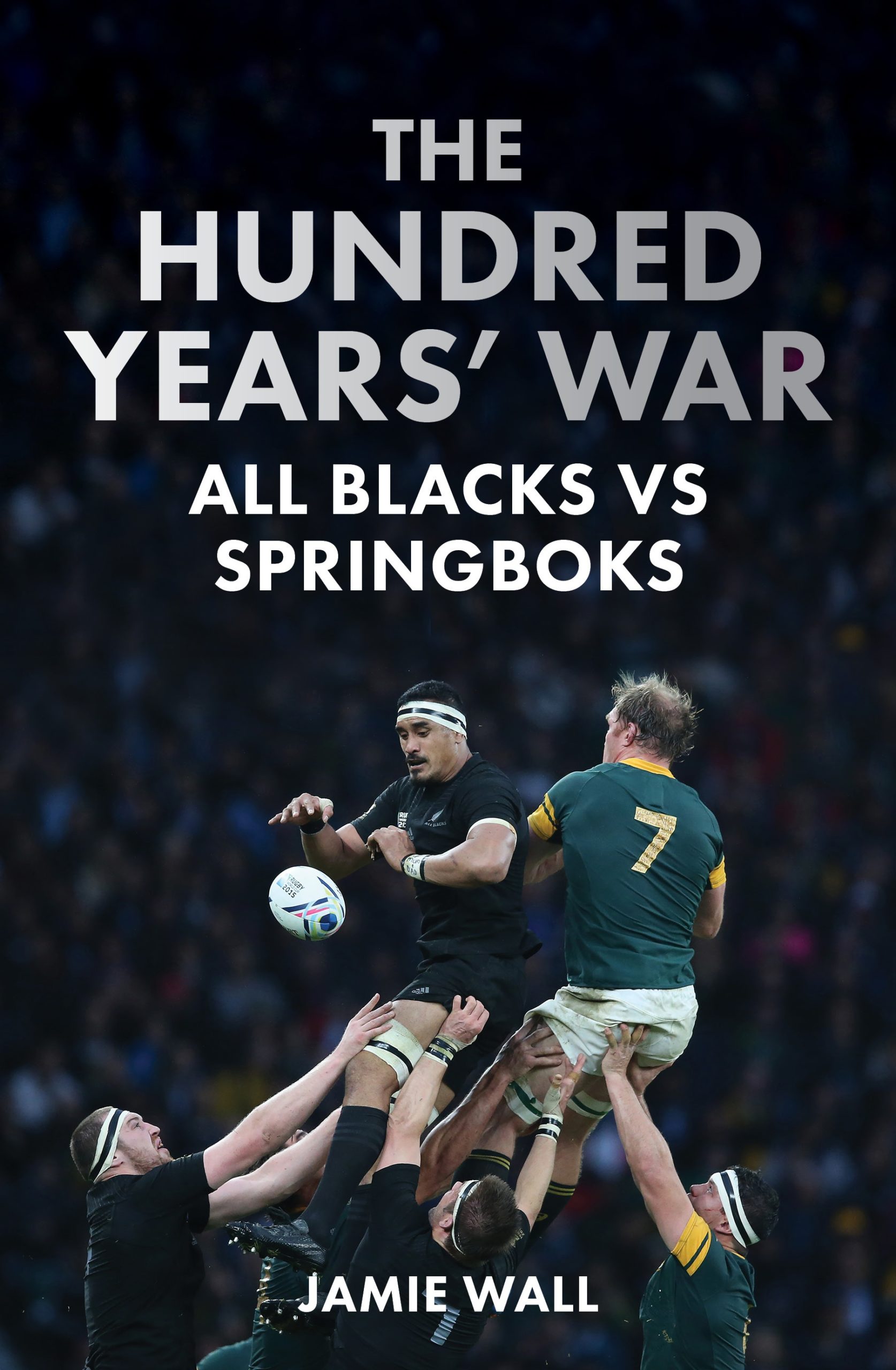The 80/20 Rule
0The majority of All Blacks v Springboks tests, numerically speaking, have been in the last 20 years. 
There have been some good tests in that time; the mauling of Albany, the Pieter van Zyl show in Durban, the draw in Wellington, and Lima’s showcase display in Johannesburg. But that is not what the history of that rivalry is about. It is about the tawdry first close on 80 years of the rivalry, when long periods of time separated games between the two powerhouses of rugby union.
An era where one protagonist was openly racists, and the other one turned a cynical cheek to that when it suited them.
And the series were so spread out. Teasing.
The history of New Zealand v South Africa conflict from the start of the Boer War through to 1992 was more about the history of the two nations’ development more than the globally fringe sport of rugby union. And that history is well covered in the latest book to come off the Jamie Wall production line; The Hundred Years’ War.
It was an era when conflict was pretty rare. In a strange way even though the conflict was so irregular, this added to its aura. This was the classic modern marketing play of Less is more. Yet it was due to logistics, rather than some grand marketing plan.
The nadir of All Black v Springbok rivalry is rightly viewed in Aotearoa through the lens of the 1981 tour here; with all the barbed wire, Red Squad, Muldoon cynicism, flour bombs, batons and an overturned police car.
But Wall also highlights the depravity of the 1976 tour to the Republic as arguably the low point. That was the tour that resulted in 27 African countries boycotting the Olympic Games because of … New Zealand. It also coincided with the Soweto riots and the subsequent torture of civilians, highlighted by the death of Biko the following year.
It was a blatant show of White Power from an administration that surely knew its days were numbered.
From that tour. An Afrikaaner in a pub when a waiter after his shift was asked to join BG Williams and a few others
“Keep his dirty fingers away from the top of the glass”
That was during the 1976 tour; in Cape Town; normally viewed as the more liberal cities in South Africa.
And, of course, they stacked the side with a 16th man with a whistle, because a series win over the All Blacks was obviously the most pressing need for The Republic.
Special mention needs to be given to the cancelled away tour in 1967. In supposedly enlightened times of The Beatles etc the NZRFU had to be told that sending an all-white team away was completely unacceptable idea.
They grudgingly accepted, but it took a lot of persuasion.
And then the circuitous politics around Norm Kirk cancelling the incoming tour in 1973 which was as much about securing the 1974 Christchurch Commonwealth Games as much as anything else.
In some ways these non tours are the most interesting parts. For example, the extraordinary attempt by New Zealand Rugby to think sending a team back to the Republic less than four years after the Barbed Wire tour was a good idea.
It is a good read, and the actual rugby is well covered. But different people are going to be drawn to different angles of the history.
And it somehow feels right that the hundredth test after a hundred years should be held as a curtain-raiser in a rugby league town in provincial Queensland.
